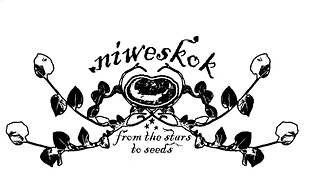OUR PROGRAMS
Our work helps reconnect people with the land, culture, and community—reviving ancestral knowledge and supporting future generations.
Wabanaki Rematriation School
We engage Wabanaki families in rematriating our foodways and feeding our communities. At the root of each community harvest, workshop, and set of curriculum materials we develop is the transmission of traditional ecological knowledge through Wabanaki languages, history, stories, ecology, and climate adaptation.


Restoring Food Access
We restore access to land, water, and foods—especially in coastal areas—through relationships with land trusts, public lands and parks, and private landowners. We have secured access to wild blueberries, cranberries, wild rice, shellfish, seaweed, traditional medicines, and much more for Wabanaki communities.
Building Food Producer Capacity
We enhance the capacity of Wabanaki producers and Wabanaki-led food and medicine projects. We uplift movers and shakers in tribal communities through technical assistance, trainings, biennial seed and plant distributions, shared tools and equipment, and the organization of work parties.


Alihpəwάkanal
As the central part of Niweskok’s work, the Agricultural Program is rooted in rematriation. It helps Indigenous communities reconnect with and care for their ancestral lands. The site sits on more than 200 acres along the Goose River. Here on the farm, traditional knowledge and regenerative practices come together naturally. As Niweskok is getting re-aquainted to the land in ancestral territory of the Penobscot Bay region, we are working with the land to heal it and restore it to a more traditional way of caring for the earth. Reaching toward decolonizing the diet and food sovereignty, Alihpəwάkanal- “Things to Eat’, our agricultural program, focuses on growing native plant relatives and traditional food crops while building soils. It’s a space where cultural resilience is nurtured. This program is a central part of Niweskok’s work.
Through our Wabanaki Community Apothecary, we facilitate earth-based medicine teachings, harvesting activities, group medicine-making, community medicine distribution, and long-term, expert-led apprenticeships.

Wabanaki Community Apothecary

Indigenous Life Cycle Teachings Reclamation
We support Indigenous Birthwork and the reclamation of Life Cycle Teachings. Food work is life cycle work—these connections to the cycles of the land support the restoration of our connection to the cycles of our lives through birth, coming of age, menopause, and death ceremonies.
